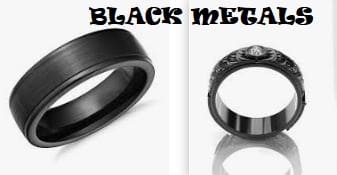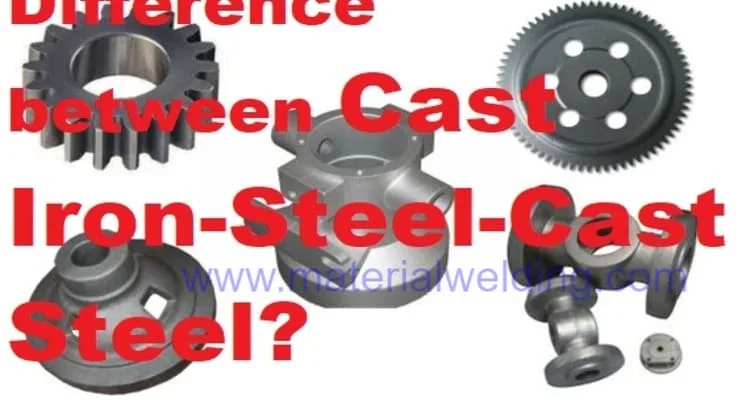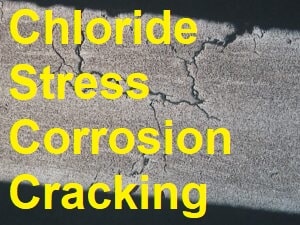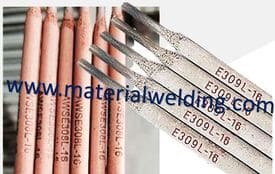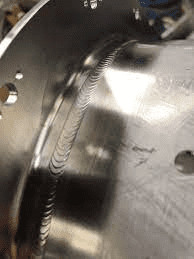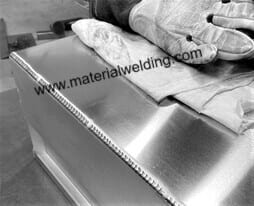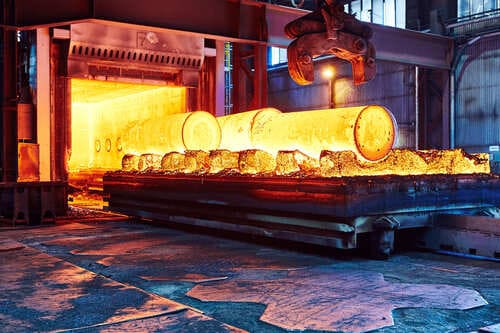TYPES OF METALS
There are many different types of metals. The type of metal is determined by its properties (chemical, physical & mechanical). Some metals are harder than others, and some metals are more resistant to corrosion, some are malleable & some are brittle.
In our day-to-day life & for engineering purposes, the most used metal type is steel (an alloy of different metals actually) which is mainly made from Iron after alloying with Manganese & silicon.
Steel is strong and durable, making it ideal for construction projects. Steel is also resistant to corrosion, making it a good choice for outdoor applications.
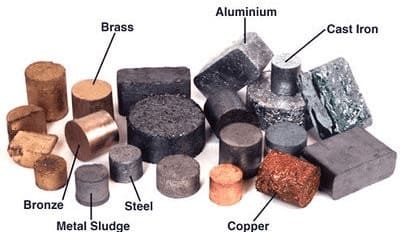
Another common type of metal is aluminum. Aluminum is lightweight and durable, making it a good choice for transportation applications. Aluminum is also resistant to corrosion, making it a good choice for outdoor applications.
Another common type of metal is copper. Copper is a good conductor of electricity, making it ideal for electrical wiring applications. Copper also has a high resistance to corrosion, making it a good choice for outdoor applications.
WHAT IS A METAL?
Metal refers to the Elements found in the earth’s crust having specific physical properties such as luster, hardness, malleability, electrical & thermal conductivity, etc. In chemistry, Metal means the elements that have metallic bonding & readily make positive ions. Metals are usually ductile & malleable.
In physics, Metals refer to substances those are having specific physical properties (e.g., luster, hardness, malleability, electrical & thermal conductivity, etc.). Examples of Metals are- Iron, Copper & aluminum, etc.
HOW ARE METALS FOUND ON EARTH?
Metals are distributed on earth based on their density. The lighter elements (metals) are found in Earth’s Crust while the heavier elements are in depth. You may have read that Earth’s core is made of Iron & Nickel (Both are heavy elements).
Some Metals are found in pure form (called Noble metals such as Gold) while others are found in their compounds or oxides. These metals need to be extracted before they can be used for engineering applications.
WHAT IS NON-METAL?
Non-Metals are mostly called metals by mistake as they reassemble Metal properties. Non-Metal means elements that lack the metal properties fully or partially.
Examples of Non-Metals are Carbon, Boron, Silicon, Sulfur, and all gases (Hydrogen, Helium, oxygen, etc.). Non-Metals are the elements that make most of the universe including earth. (E.g., Water is made up of two non-metals-Hydrogen & Oxygen).
While some non-metals are colorless (most of the gases) others are having distinctive colors (Sulfur having yellow color, boron with silver color & carbon having black color in graphite form).
CHARACTERISTICS (PROPERTIES) OF METALS
Metals are unique elements with special characteristics (Properties) and crystalline microstructure.
Metals are different from other elements found in the universe. In terms of physical, chemical & engineering points of view, the main Characteristics of Metals are:
- Metals are having Metallic Bonding. Metallic Bonding gives metals their unique extraordinary mechanical, thermal, electrical, and magnetic features.
- Metal can be worked- Cold working or Hot Working. This means they can be rolled in sheets, extruded & bending. These properties of metal exist due to the presence of a slip system that allows plastic deformation.
- Pure Metals are ductile which means they can be bent without any sudden brittle fracture.
- Metal has a High melting point. Most of the metal melt at very high temperature. The exception is Mercury (Hg) which has a melting temperature of -38.83 °C. S0, that is in the liquid state at ambient temperature.
- Metals are very good conductors of electricity. Their electric resistance is very less making them a useful material to transfer electricity from one place to other or in electronic equipment.
- Metals have high density.
- Metals are malleable. A malleable properly of metal means that can be made into thin flat sheets or wires by hammering without any fracture/ shattering. For example- Silver is a highly malleable metal.
- Metals are very good conductors of Heat. This property allows the metal to be used for heat transfer applications & making it the best element for household utensils, for example.
WHAT IS AN ALLOY?
An alloy is a mixture of two or more metals. The metals are melted together and cooled to form a solid. Alloys are usually stronger and harder than the metals they are made from.
They also have different colors. Some alloys, like brass, are used to make coins and jewelry. Others, like steel, are used to make tools and machines.
CLASSIFICATION & TYPES OF METALS
Metals are a class of elements that share certain physical and chemical properties. There are many different types of metals, each with its own unique set of characteristics.
Some metals, like gold, are considered valuable for their rarity and beauty. Others, like aluminum, are prized for their low weight and corrosion resistance.
WHAT ARE FERROUS & NON-FERROUS METALS?
The classification of metals is based on their chemical composition. Metals can be classified as
- Ferrous Metals and
- Non-Ferrous Metals.
Ferrous metals contain iron and are attracted by a magnet. Non-ferrous metals do not contain iron and are not attracted by a magnet.
Ferrous metals can be further classified into carbon steels and alloy steels. Carbon steels are made up of iron and carbon, while alloy steels are made up of iron, carbon, and other elements such as nickel or chromium.
Non-ferrous metals can also be further classified into base metals and precious metals. Base metals are mainly used for industrial purposes, while precious metals have high economic value.
Some common ferrous metals include steel, wrought iron, cast iron, and tool steel.
WHAT ARE FERROUS METALS?
Ferrous metals are alloys that contain iron. The most common ferrous metals are steel and wrought iron.
Ferrous metals are widely used in construction, automotive, and engineering applications. They are also used in objects that need to be strong and durable, such as tools, appliances, and machinery. Ferrous metals can be recycled, which makes them a sustainable resource.
Ferrous metals have a variety of applications. They are often used in construction because they are strong and durable.
Carbon steel is commonly used in beams, girders, and columns. Stainless steel is often used in kitchen appliances and countertops. Tool steel is often used to make knives, saw blades, and other tools.
WHAT ARE NON-FERROUS METALS?
Non-ferrous metals are those that contain no iron. These metals are prized for their resistance to corrosion and their ability to withstand high temperatures.
Non-ferrous metals include aluminum, copper, brass, and bronze. They are often used in construction or manufacturing because of these attributes.
Non-ferrous metals also have many applications. Aluminum is often used in beverage cans and cookware.
Brass is often used for plumbing fixtures and door handles. Copper is often used for electrical wiring and roofing materials.
MOST COMMON ENGINEERING METALS
There are many different types of metals used in engineering, but some are more common than others.
Steel, aluminum, and copper are some of the most commonly used metals in engineering. Each metal has its own unique properties that make it suitable for certain applications.
Steel is a strong and durable metal that is commonly used in construction and manufacturing.
Aluminum is a lightweight metal that is corrosion-resistant and is often used in transportation applications. Copper is a soft metal that has high electrical conductivity and is often used in electrical wiring.
CARBON STEEL
Carbon steel is an alloy of iron and carbon, the amount of carbon typically ranging from 0.05% to 2.0%. It is the most common form of steel because it is economical and has good strength and hardness. Carbon steels are divided into four main types:
- low-carbon steels,
- medium-carbon steels,
- high-carbon steels, and
- very high-carbon steels.
Low-carbon steels contain up to 0.3% carbon and are the softest and most ductile type of carbon steel.
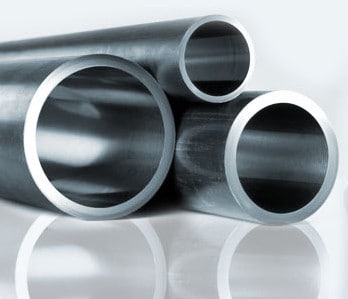
They are used for applications such as forming, stamping, and wire drawing because they can be easily shaped and have a good resistance to wear.
Medium-carbon steels contain between 0.3% and 0.6% carbon and are stronger than low-carbon steels but still relatively easy to work with.
LOW CARBON STEEL
Low-carbon steel is a type of steel that has a lower carbon content than other types of steel. This makes the steel less brittle and more ductile, which means it can be more easily shaped and formed.
Low-carbon steel is often used in construction, automotive manufacturing, and other industrial applications.
There are different grades of low-carbon steel, each with its own unique properties. Some common grades include 1010 steel, 1020 steel, and 1045 steel. These grades are all relatively easy to shape and form, making them ideal for many applications.
Low-carbon steel is known for its good strength-to-weight ratio and corrosion resistance. It can also be heat treated to achieve higher tensile strength. Applications that require these properties include automotive parts, structural beams, and bolts.
MEDIUM CARBON STEEL
Medium carbon steel is a type of carbon steel with a carbon content range between 0.15 and 0.60 percent by weight.
This type of steel has a great combination of strength and ductility and is often used in automotive and construction applications. The most common grades of medium carbon steel are AISI 1040, AISI 1045, and AISI 1050.
These grades have a variety of mechanical properties that make them suitable for many different applications.
For example, AISI 1040 has a yield strength of 54 ksi, while AISI 1050 has a yield strength of 63 ksi. In addition, medium carbon steels are generally easy to machine and weld.
HIGH CARBON STEEL
High-carbon steel is a type of alloy steel that contains more than 0.6% carbon. The amount of carbon in the alloy affects the steel’s properties and applications.
High-carbon steels are harder and stronger than low-carbon steels, but they are also more brittle. They are used for applications that require a high strength-to-weight ratios, such as knives, springs, and axles.
The most common grades of high-carbon steel are 1045, 1060, 1070, and 1080. These steels have a carbon content of 0.45%, 0.60%, 0.70%, and 0.80%, respectively. They have a variety of properties that make them suitable for different applications:
1045 is a general-purpose grade that can be used for knife blades, punches, dies, and other machining applications.
CAST IRON
Cast iron is a type of iron produced by melting pig iron & casting it using a mold. It is a brittle metal that is strong and heavy.
It has a low melting point, so it can be cast into shapes. Cast iron is used to make cookware, tools, and other objects. Cast Iron contains more than 2% Carbon.
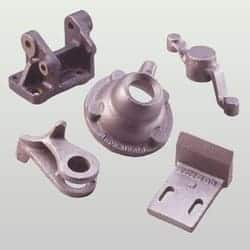
There are several grades of cast iron, depending on the amount of carbon in the metal. The most common grades are mild steel, cast steel, alloy steel, and tool steel.
Cast iron has a number of properties that make it useful for making objects. It is strong and heavy, so it can be used to make tools and cookware. It also has a low melting point, so it can be easily cast into shapes.
STEEL
Steel is derived from the German Word ‘Stahel’ which means Solid or Hard. Steel is an alloy made up of iron and carbon. The carbon percentage can be controlled to create different types of steel with varying properties.
Low carbon steel is soft and easy to work with, but it’s not as strong as high carbon steels. When steels containing more than 0.2% carbon are heated and then cooled slowly, the crystals that form are very small and the steel is said to have a “fine grain.”
This makes the steel more brittle and harder to work with, but it also makes it stronger. Steel can be heat treated to make it even stronger by changing the crystal structure of the metal. It can also be tempered, which makes it less brittle.
STAINLESS STEEL
Stainless steel is a type of steel that contains chromium and nickel. These metals make the steel resistant to corrosion and staining.
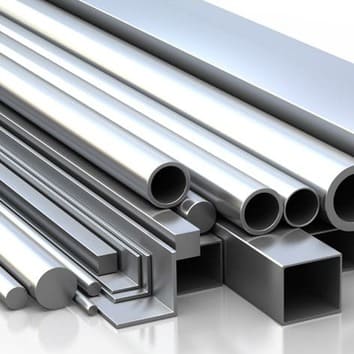
Stainless steel can come in different grades, each with its own unique properties. The most common grade of stainless steel is 304 stainless, which is used in a wide variety of applications.
AUSTENITIC STAINLESS STEEL
Austenitic stainless steel is a type of steel that has a high resistance to corrosion and is non-magnetic.
This type of steel is typically used in applications where strength and toughness are important, such as in the manufacturing of food processing equipment, surgical instruments, and marine hardware.
There are three main grades of austenitic stainless steel: 304, 316, and 321. 304 is the most common grade, followed by 316. 321 has a higher resistance to heat and corrosion than the other two grades and is often used in applications that require elevated temperatures.
Austenitic stainless steel typically has a chromium content of 18-20% and a nickel content of 8-10%.
Austenitic stainless steel has several key properties that make it desirable for many applications. It is non-magnetic, meaning it will not be affected by magnetic fields.
FERRITIC STAINLESS STEEL
Ferritic stainless steel is a type of stainless steel that has a ferrite crystal structure. This type of steel is magnetic and has lower corrosion resistance than other types of stainless steel.
It is also less tough and harder to weld. However, it is less expensive than other types of stainless steel and can be used in moderate environments. The most common grades of ferritic stainless steel are 430 and 439.
DUPLEX STAINLESS STEEL
Duplex Stainless Steel is a stainless steel alloy with a two-phase microstructure of austenite and ferrite.
It has high chromium (22%) and nickel (24%) content, making it corrosion-resistant. Duplex Stainless Steels are classified into two main types: Lean Duplex and Super Duplex.
Lean duplex grades have a lower nickel content than super duplex grades, and are less resistant to pitting and crevice corrosion.
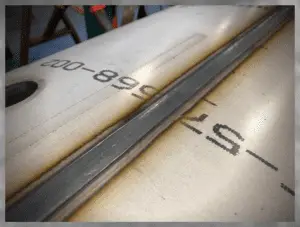
Super duplex grades have a higher nickel content, making them more resistant to these forms of corrosion.
Common grades of duplex stainless steel include 2205, 2507, and 2618. These grades have different properties, which make them suited for different applications.
For example, 2205 is widely used in the oil and gas industry because of its high strength and resistance to chloride stress corrosion cracking.
PRECIPITATION-HARDENED STAINLESS STEEL
Precipitation Hardened Stainless steel is a family of stainless steels that are heat treated to achieve the desired properties.
The most common type of precipitation hardening is austenitic stainless steel, which is initially strengthened by adding niobium or titanium to the alloy.
After heat treatment, this mixture forms a new phase called “precipitation” which strengthens the alloy. Precipitation hardening can also be achieved in ferritic and martensitic stainless steels through the addition of certain elements such as aluminum, copper, and nickel.
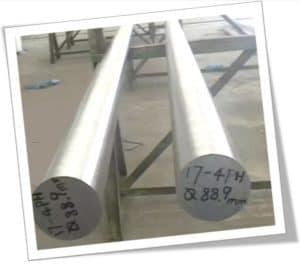
The benefits of precipitation hardened stainless steel include high strength and hardness, good corrosion resistance, and good toughness.
This type of steel is used in a variety of applications such as automotive parts, medical equipment, food processing equipment, and hydraulic systems.
ALUMINUM
Aluminum is a lightweight metal that is strong, durable and corrosion-resistant. It is the most abundant metallic element in the Earth’s crust, making up about 8 percent of the planet’s mass.
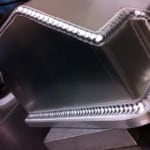
Aluminum has a variety of uses, from construction to transportation to packaging. There are several different types of aluminum, each with its own unique properties.
The most common grades of aluminum are 1100, 3003 and 6061. Aluminium alloys have been used for centuries because they are strong and lightweight.
COPPER
Copper is a versatile metal with a long history of use. It has many different grades and types, each with unique properties that make it suitable for different applications.
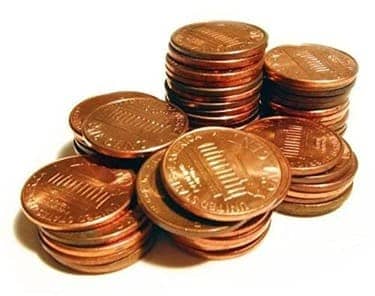
Copper is often used in electrical wiring due to its good conductivity, and it is also commonly used in plumbing due to its resistance to corrosion.
SILVER
Silver is a soft, white, lustrous metal. It is a little harder than gold and has a slightly lower melting point. Silver is found in nature combined with other elements.
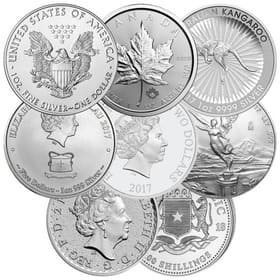
The most common silver mineral is called argentite. Silver is also found in lead, copper, and zinc ores.
The United States uses more silver than any other country. About two-thirds of the silver used each year goes into making coins and Medals.
The rest is used for jewelry, photography, electrical contacts and connectors, mirrors, and many other things.
Silver has been used as money for thousands of years because it does not corrode or tarnish. It is also very ductile-it can be drawn out into a thin wire without breaking-and malleable-it can be hammered into thin sheets without breaking.
GOLD
Gold is a yellow metal with a density of 19.3 g/cm³. It has a melting point of 1064.18 °C and a boiling point of 2900 °C. Gold is malleable, ductile, and chemically inert.
The most common grades of gold are 24 karats, 22 karats, 18 karats, 14 karats, and 10 karats. Gold has many uses including jewelry, coins, electronics, and dentistry.
TIN
Tin is a metal that has been around since the Bronze Age. It is found in many different grades, each with unique properties. Tin is most commonly used in solder, as it has a low melting point and is non-toxic. It can also be used to coat other metals to prevent corrosion.
ZINC
Zinc is a mineral that is found in the earth’s crust. It is a key ingredient in making steel and brass. It is also used to make coins, batteries, and other items.
There are different grades of zinc depending on the purity of the metal. The most common grade of zinc is called galvanized zinc. It has a purity of 99.995%. Another common grade of zinc is called die-cast zinc. It has a purity of 99.9%.
Zinc has many properties that make it useful for different applications. It is a good conductor of electricity and heat. It is also corrosion resistant and can be used in marine environments. Zinc can also be plated onto other metals to protect them from corrosion.
LEAD
Lead is a metal that is soft, heavy, and has a dull silver color. It is found in nature as a sulfide or carbonate.
Lead is one of the most common metals in the world. It is used to make bullets, pipes, and roofing materials. Lead can be toxic if it is eaten or breathed in.
MAGNESIUM
Magnesium (Mg) is a silver-white metallic element that is the eighth most abundant element in the Earth’s crust.
Magnesium occurs naturally as a silicate mineral and is also found in seawater and many minerals. It is the fourth most common element used in metallurgy. Magnesium alloys are used in aircraft, automobiles, and other transportation equipment.
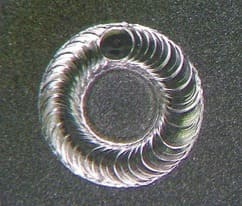
The most common magnesium grades are die casting alloys (ADC12), permanent mold alloys (A356), and sand casting alloys (AZ31).
The properties of magnesium include high strength-to-weight ratio, good machinability, formability, weldability, and corrosion resistance. Magnesium is often used as a substitute for aluminum because it has better mechanical properties.
TITANIUM
Titanium (Ti) is a chemical element with the symbol Ti and atomic number 22. It is a lustrous, white metal with a low density and is second only to iron in terms of common metals found in Earth’s crust.
There are several grades of titanium, which are determined by their respective percentages of alloying elements. The two most common grades are 6Al-4V and 3Al-2.5V.
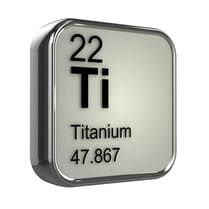
Titanium has many desirable properties, including a high strength-to-weight ratio, corrosion resistance, biocompatibility, and non-magnetic properties. It is used extensively in aerospace and marine applications, as well as medical implants and prostheses.
TUNGSTEN
Tungsten is a chemical element with symbol W and atomic number 74. It is a hard, heavy, silver-white metal in the transition metals group.
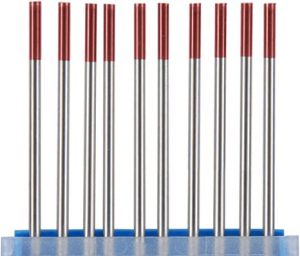
Common grades of tungsten are W1, W2, W3, and so on. The properties of tungsten vary depending on the grade.
Tungsten has a high melting point (3422°C), making it ideal for use in filament-based light bulbs and other applications that require high temperatures.
It also has a very low coefficient of thermal expansion, meaning it does not expand or contract much with changes in temperature.
This makes tungsten ideal for use in high-temperature applications such as furnace parts and tools. Tungsten is also highly resistant to corrosion and wear, making it useful for applications such as drill bits and cutting tools.
NICKEL
Nickel is a strong, malleable and corrosion-resistant metal that has a silvery appearance. It is found in nature as the mineral pentlandite. Nickel is also one of the five base metals from which brass is made.
The most common grades of nickel are nickel 200 and nickel 400. Nickel 200 has good mechanical properties and is used in engineering applications. Nickel 400 has better corrosion resistance and is used in marine applications and chemical processing.
Nickel has a number of desirable properties, including high strength, toughness and ductility, good electrical and thermal conductivity, low coefficient of friction, and excellent corrosion resistance.
These properties make it useful in a variety of applications, including: coins; magnetic alloys; stainless steel; heat exchangers; special alloys for aerospace applications; prosthetic devices.
COBALT
Cobalt is a key component in the manufacture of jet engines, as it can withstand high temperatures.
It is also used in the production of rechargeable batteries, magnets, and alloys. Cobalt has a very high melting point, and is resistant to corrosion. The most common grades of cobalt are Cobalt-28 and Cobalt-59.
SILICON
Silicon is a chemical element with symbol Si and atomic number 14. A hard and brittle crystalline solid with a blue-gray metallic luster, it is a tetravalent metalloid.
Silicon is the eighth most common element in the universe by mass, but very rarely occurs as the pure element in nature. It is found in various silicate minerals and rocks.
Most silicon production is in the form of silicon dioxide (silica), using either the chemical reduction of quartz or direct reduction of sand.
Silica is converted into silicon metal by heating with carbon in an electric arc furnace: SiO2 + 2C →Si + 2CO.
Metallic silicon is used to make alloys with aluminum, copper, magnesium, and other metals. Silicon forms ionic compounds with elements from groups 13 to 16 of the periodic table.
SULFUR
Sulfur is a non-metallic element that is found in the earth’s crust. It is the tenth most common element in the universe.
Sulfur has a yellow color and a characteristic smell of rotten eggs. It is a brittle solid that is soluble in water and alcohol. Sulfur is used in many industries including agriculture, manufacturing, and petroleum refining.
The most common grades of sulfur are agricultural sulfur and industrial sulfur. Agricultural sulfur is used to improve the quality of the soil.
Industrial sulfur is used to make other chemicals and products. Properties of sulfur include its flammability, reactivity, and toxicity.
Sulfur can be burned to produce sulfur dioxide, which can be harmful to humans and the environment.
Sulfur can also be used to make hydrogen sulfide, which can also be harmful to humans and the environment.
PHOSPHORUS
Phosphorus is a mineral found in the earth’s crust. It is the fifth most abundant element in the earth’s crust and makes up about 0.1% of it.
Phosphorus is usually found combined with other elements, such as oxygen, silicon, and iron.
The most common form of phosphorus is white phosphorus, which is a soft, waxy solid. There are also several other grades of phosphorus that are used for different purposes.
Some of the key properties of phosphorus include its reactivity with oxygen, water, and acids; its low melting point; and its ability to form phosphates.
Phosphates are important because they are essential nutrients for plants and animals. They are also used in many industrial processes, such as water treatment and fertilizer production.
Phosphorus is a vital ingredient in both plant and animal nutrition.
Read more:
- https://www.twi-global.com/technical-knowledge/faqs/ferrous-vs-non-ferrous-metals
- https://en.wikipedia.org/wiki/Metal
- https://www.britannica.com/science/metal-chemistry
